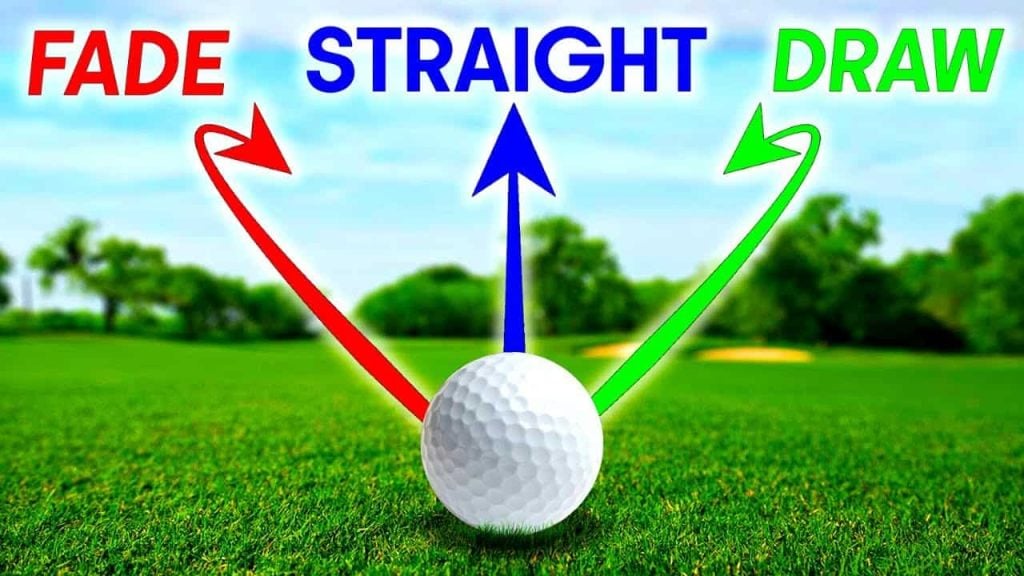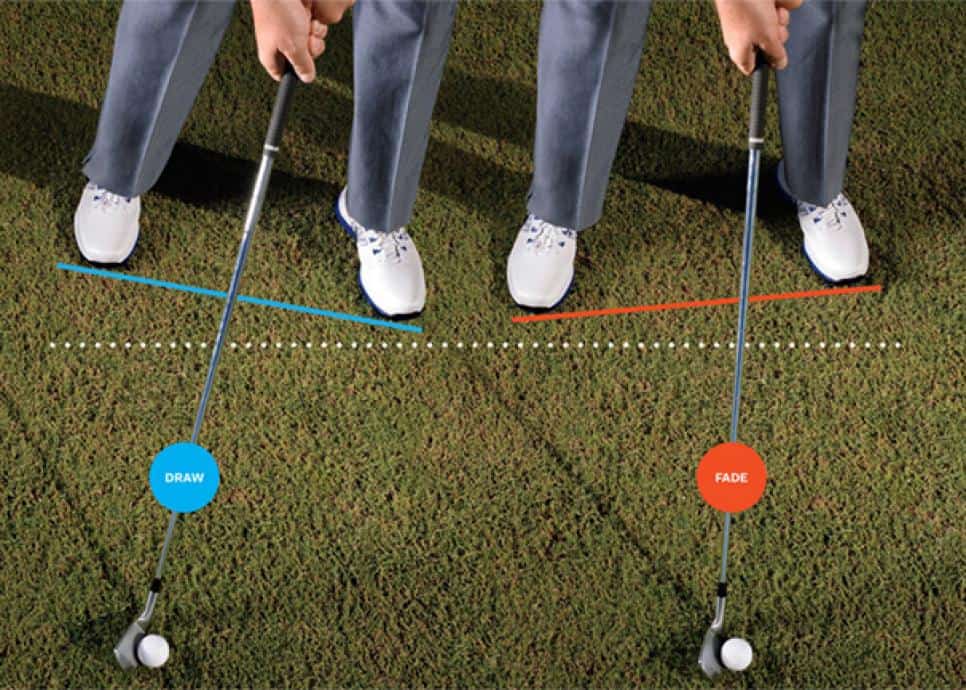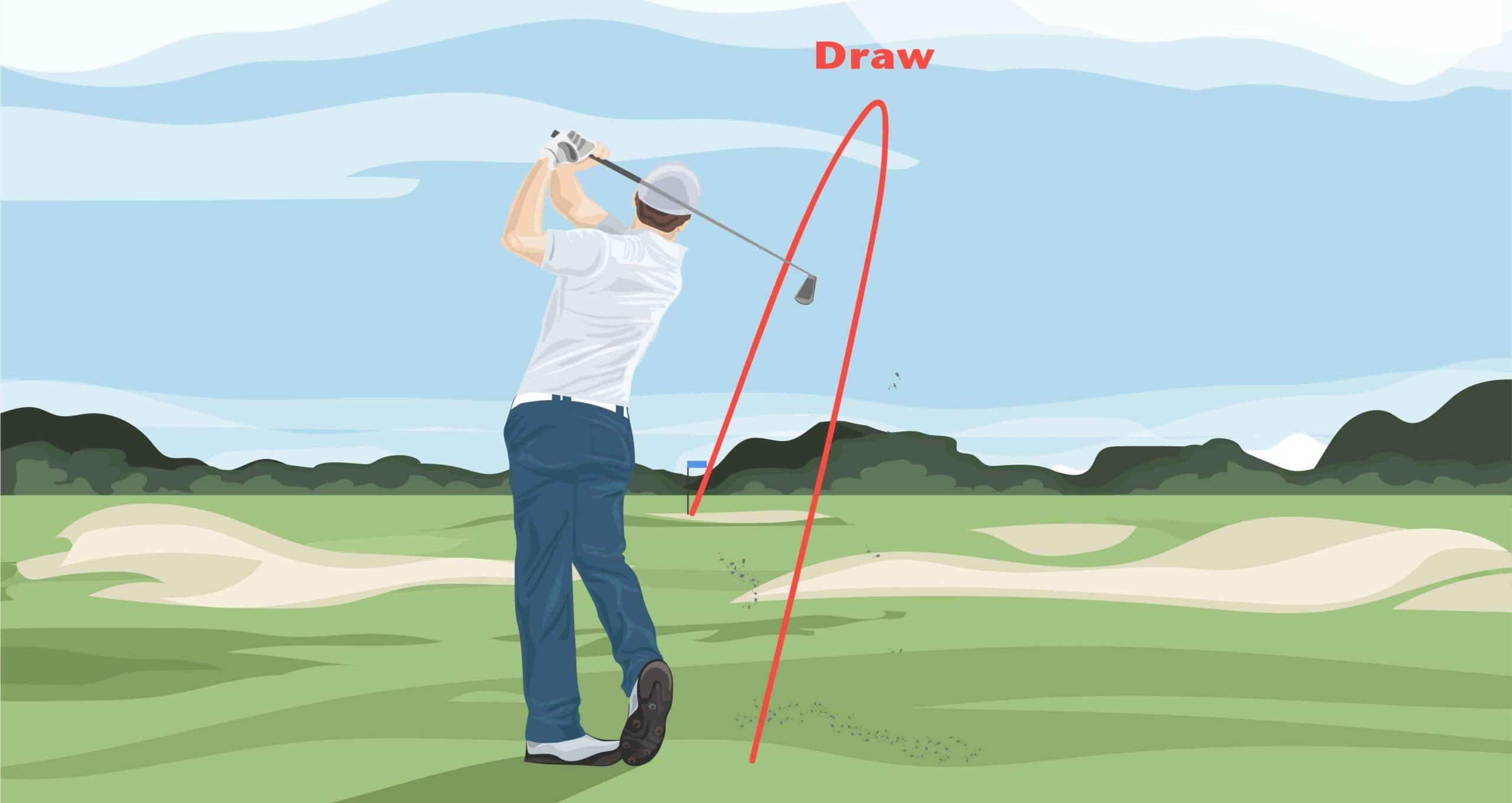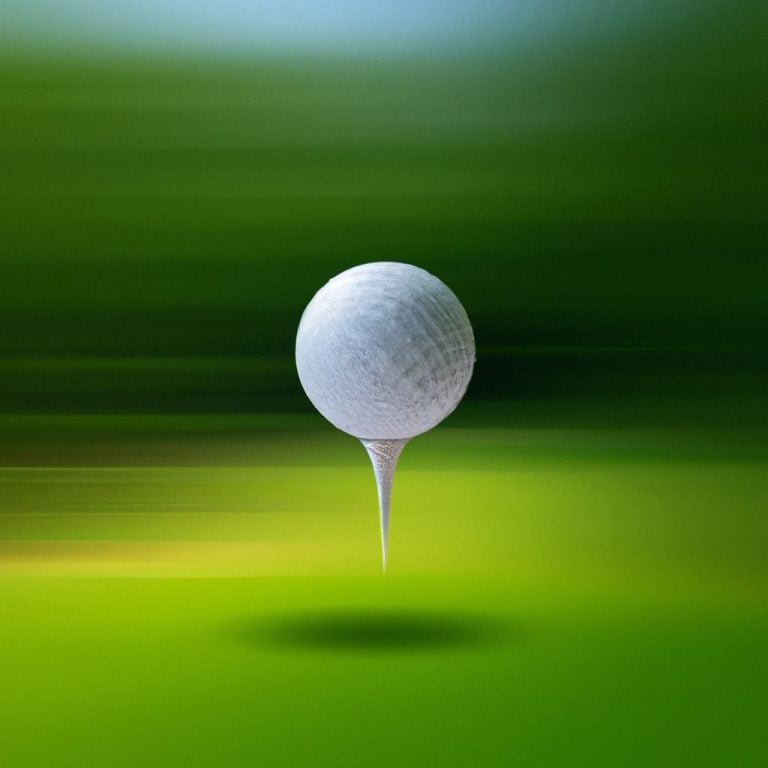How to hit a draw in golf [2024]
Hey golf enthusiasts! Have you ever watched in awe as the pros effortlessly curve their shots, drawing the golf ball from right to left with precision and style? Well, it’s your turn to step into the spotlight. Mastering the art of hitting a draw in golf isn’t just about looking cool on the course; it’s a skill that can significantly improve your game, giving you an edge over the competition and the course itself.
In this guide, we’re going to break down the steps to achieving that coveted draw shot. Here’s what you’ll learn:
- The Basics of a Draw: What is a draw in golf, and why is it such a game-changer for golfers of all levels?
- The Setup: How to position your body, feet, and grip to prime yourself for a successful draw shot.
- Golf Swing Path Secrets: Understanding the path and face angle needed to curve the ball just right.
- Practice Drills: Simple yet effective drills to engrain the draw into your muscle memory.
- Troubleshooting: Tips on what to do if you’re struggling to hit a draw and how to correct common mistakes.
- Real-World Application: How and when to use a draw to your advantage on the course.
Whether you’re a seasoned golfer looking to refine your skills or a beginner eager to add a powerful tool to your golfing arsenal, this guide is for you. Let’s demystify the process and get you hitting draws like a pro in no time. Grab your clubs, and let’s get started!
Key Takeaway:
- The ability to hit a draw in golf can provide various benefits, such as increased distance, improved accuracy, and greater versatility in shot selection.
- To hit a draw, understanding the relationship between the club path and clubface is crucial. A slightly inside-to-out swing path coupled with a closed clubface at impact can help create the desired draw shape.
- A proper setup is essential for hitting a draw. This includes aligning your body and clubface to the target slightly to the right, enabling a more natural path to produce a draw.
- When hitting a draw with different clubs, adjustments may be necessary. With a driver, tee the ball higher, position it forward in your stance, and focus on sweeping the ball. With irons, slightly adjust your setup and aim to strike the ball before the ground for optimal ball flight.
- Visualization and aiming techniques can enhance your ability to hit a draw. Visualize the desired shape of the shot and pick a target slightly to the right of it. This mental imagery can help guide your swing path and clubface alignment.
- A proper grip and hand position play a vital role in hitting a draw. Experiment with grip pressure and hand position to find a comfortable and effective setup for generating the desired shot shape.
- Consistent practice is key to mastering the draw shot. Focus on repeating proper swing mechanics and clubface control to develop muscle memory and improve shot consistency.
- Avoid common mistakes and troubleshoot your draw shot. Be mindful of overdoing the draw, as it can lead to a hook. Additionally, analyze and adjust your swing if the ball consistently fails to produce the intended draw shape.
Introduction
Mastering the draw shot in golf can significantly impact your game. In this section, we will explore what exactly a draw shot is, its significance in the sport, and the numerous benefits it offers to golfers. Brace yourself to gain insights on how this technique can enhance your control, distance, and overall performance on the golf course. Let’s dive into the art of hitting a draw and unlock its potential for your game.

Understanding the Basics
Before diving into the specifics of how to hit a draw shot in golf, it’s crucial to grasp some fundamental concepts. A draw shot is a type of ball flight characterized by a gentle right-to-left curve (for a right-handed golfer). Achieving this effect requires a specific swing path and clubface orientation relative to the target line.
- Draw Shot: This is the holy grail for many golfers, offering controlled distance and a predictable flight path. The draw is not just aesthetically pleasing but also practical, often rolling further due to the proper draw spin.
- Swing Path: This refers to the direction the golf club is moving at the point of impact with the ball. For a draw, you’ll need an in to out path, which means the club is moving from inside the target line to outside during the strike.
- Target Line: Imagine a straight line from the ball to the target. Your golf swing path needs to cross this line at an angle to create the draw.
- Ball Flight: Understanding how the ball reacts to your swing is key. A draw ball flight starts right of the target (for right-handed players) and gently curves back to the left.
By mastering these basics, you’re laying the foundation for consistently hitting a draw on the golf course.
Importance and benefits of being able to hit a draw
Hitting a draw in golf is important. It curves right to left (for right-handed golfers) or left to right (for left-handed golfers). This allows players to go around obstacles, like trees or bunkers. It also increases distance and control, improving scoring opportunities.

To do it consistently, you need to understand the mechanics. The club path and clubface position at impact influence the ball’s flight. To hit a draw, you need a closed clubface and an inside-to-square swing path. Adjust your grip and feet to promote the shot. And keep the clubface square throughout the swing.
Each club needs different techniques. With drivers, focus on controlling the clubface, swing path, balance, and rotation. With irons, focus on the same things, but adjust the swing path, balance, and hand position.
Improve your draw with visualization, like imagining a clock face. Aim for contact at “1 o’clock”. Keep your grip and hands in place. Practice and use alignment rods.
Prevent mistakes like side spin or hooks, by maintaining consistency. Improve accuracy and precision instead of fixing a slice.
Understanding the Basics
Before diving into the specifics of how to hit a draw shot in golf, it’s crucial to grasp some fundamental concepts. A draw shot is a type of ball flight characterized by a gentle right-to-left curve (for a right-handed golfer). Achieving this effect requires a specific swing path and clubface orientation relative to the target line.
- Draw Shot: This is the holy grail for many golfers, offering controlled distance and a predictable flight path. The draw is not just aesthetically pleasing but also practical, often rolling further due to the proper draw spin.
- Swing Path: This refers to the direction the golf club is moving at the point of impact with the ball. For a draw, you’ll need an in to out path, which means the club is moving from inside the target line to outside during the strike.
- Target Line: Imagine a straight line from the ball to the target. Your swing path needs to cross this line at an angle to create the draw.
- Ball Flight: Understanding how the ball reacts to your swing is key. A draw ball flight starts right of the target (for right-handed players) and gently curves back to the left.
By mastering these basics, you’re laying the foundation for consistently hitting a draw on the golf course.
The Mechanics of a Draw Shot
Achieving a draw shot involves precise mechanics with your swing path and clubface. Let’s break down the essential elements:

- Inside Out Swing Path: The cornerstone of a draw shot. As a right-handed golfer, this means swinging the club towards the ball on a path that’s inside the target line, then making contact and following through to the outside of it. This path encourages the ball to start right and curve left.
- Clubface Position: At the moment of impact, the clubface should be slightly closed relative to the path but still slightly open to the target line. This delicate balance imparts the right spin for a draw.
- The Right Combination: For a draw, the clubface is crucial. It should point just right of your target at impact, with the swing path moving further right. This difference between the club’s direction at impact and the face orientation is what creates the draw spin.
Setting Up for Success
Proper setup is essential for hitting a draw. From your stance to the grip, every aspect of your setup can either contribute to or detract from your ability to hit this shot.
- Stance and Alignment: Aim your feet, hips, and shoulders slightly right of the target, creating an out to in path. This stance encourages the inside-out swing necessary for a draw. The stance line should be parallel to the target line but shifted to the right.
- Grip: Adopt a slightly stronger grip. This doesn’t mean squeezing the club harder but rotating your hands to the right on the grip (for right-handed players). You should be able to see a couple more knuckles on your left hand than usual. A stronger grip helps ensure the clubface is closed relative to the swing path at impact.
- Positioning the Ball: For most clubs, position the ball just inside your left heel (for right-handed golfers). This placement helps ensure that the club is on the correct inside-out path through impact.
- Trail Leg and Back Foot: The trail leg should be slightly more bent and the back foot a bit flatter to promote a deeper turn on the backswing. This position aids in achieving the desired swing path.
By focusing on these setup elements, you’re not just preparing to hit a draw; you’re also setting the stage for a more powerful and controlled golf shot. Remember, the goal is to create the conditions for an inside-out path and a clubface that’s closed to the path but open to the target line. With practice, these adjustments will become second nature, and you’ll start hitting draws more consistently.
Executing the Draw Shot
Hitting a draw requires more than just the correct setup; it demands precision throughout your swing. Here’s how to execute the draw shot, step by step:
- Backswing: Initiate your backswing with a focus on keeping your right shoulder (for right-handed golfers) moving under and behind you. This motion naturally encourages an inside-out swing path. Keep your wrists firm to maintain the clubface angle.
- Downswing: As you start the downswing, concentrate on moving your arms and club down on an inside track. Visualize swinging out towards right field (for right-handed players), ensuring your swing path is moving from the inside to the outside relative to the target line.
- Impact: At the moment of impact, your clubface should be slightly closed to the path but still open to the target line. This precise alignment is what imparts the draw spin. Your hips should start to open, but your shoulders remain more square to encourage the in-to-out path.
- Follow-Through: Continue with a full follow-through, allowing your club to naturally rotate over in your hands. Your body should finish facing the target, with your weight shifted onto your lead leg. This finish ensures you’ve committed to the shot and maintained the correct path and clubface alignment through impact.
Practice Drills and Tips
To consistently hit a draw, integrate these drills into your practice routine:
- Alignment Stick Drill: Place alignment sticks on the ground to represent the target line and your intended swing path. These visual aids help reinforce the inside-out path necessary for a draw. Practice swinging along the inside-out path while keeping the target line in mind.
- Clubface Control Drill: Practice hitting shots while focusing on manipulating the clubface to be slightly closed to the swing path but open to the target line at impact. You can start with half swings to feel the correct position at impact.
- Towel Drill: Place a towel or headcover a couple of inches outside the ball and on the target line. The goal is to avoid hitting the towel on your downswing, encouraging an inside-out path.
Remember, the key to practicing is not just repetition but mindful repetition. Focus on each component of the draw shot, from setup to follow-through, and make adjustments as necessary.
Common Mistakes and How to Correct Them
Several common mistakes can prevent golfers from successfully hitting a draw. Here are some of the most frequent issues and how to correct them:
- Overdoing the Inside Path: Some golfers overemphasize the inside-out swing, leading to hooks instead of draws. To correct this, ensure your clubface is not too closed relative to your swing path. Aim for a slight inside path rather than an exaggerated one.
- Incorrect Grip: A grip that’s too weak can prevent the clubface from closing, resulting in a slice instead of a draw. Strengthen your grip slightly by rotating your hands to the right on the club (for right-handed players), ensuring you can see more knuckles on your lead hand.
- Poor Alignment: Aligning too far left can sabotage your draw before you even swing. Make sure your body lines (feet, hips, shoulders) are aimed slightly right of the target, promoting the correct swing path.
- Lack of Follow-Through: Failing to fully rotate your body through the shot can prevent the proper club path and face alignment at impact. Focus on completing your swing with your chest facing the target and your weight shifted forward.
By addressing these common issues with targeted corrections, you’ll be on the right path to consistently hitting effective draw shots. Remember, every golfer’s swing is unique, so it may take some experimentation to find the adjustments that work best for you.
Hitting a Draw with Different Clubs
Hitting a draw in golf can be a game-changer, and it’s even more impressive when achieved with different clubs. In this section, we’ll explore the art of hitting a draw with various clubs, including drivers and irons.
Discover the techniques and nuances behind executing successful draw shots with each club, and gain insights that can enhance your overall golfing performance. Get ready to add versatility and finesse to your game as we dive into the world of hitting a draw with different clubs.
Draw shots with a driver
A draw shot with a driver in golf involves manipulating the clubface and attaining a special ball flight. Golfers needing to shape their shots and get more distance must know the mechanics of a draw. This includes the correlation between club path and clubface position.
To hit a draw shot with a driver, here are the steps:
- Adjust your grip: Start by changing your grip. A stronger grip can help close the clubface at impact, which is needed for a draw.
- Place your feet: Stand with your feet slightly closed compared to your target line. This encourages an inside-to-square swing path that causes a right-to-left ball flight.
- Balance and rotation: During your swing, focus on balancing and rotating your body smoothly. This allows you to square the clubface at impact.
- Swing Align: Consider using Swing Align as a training tool to hit draw shots with a driver. It helps reinforce proper body positioning and encourages consistency in swing mechanics.
- Practice often: You must practice consistently to master the draw shot with a driver. Take time to learn your swing mechanics and adjust as necessary. Utilize alignment rods to ensure proper setup and execution.
Drawing shots with a driver offers various difficulties due to its length and design characteristics. But by following these steps, golfers can develop the skills needed to consistently achieve controlled draws off the tee.
For further improvement or trouble-shooting, it’s suggested to take professional coaching or advice from experienced golf instructors. They can give personalized instruction based on individual needs and goals.
Draw shots with irons
Draw shots with irons in golf refer to intentionally curving the ball from right to left. This shot helps navigate around obstacles or increase distance.
Mastering it requires knowledge of three elements: club path, swing mechanics, and hand position.
- Club Path and Swing Mechanics: The clubhead should move from inside the target line towards the golfer before returning to square at impact. This creates a clockwise spin for a draw.
- Hand Position and Grip: Keep grip strong and consistent, and hand position constant. Avoid excessive wrist movement.
- Focusing on Swing Path: Focus on the inside-to-square path rather than speed or power.
Irons typically have shorter shafts than drivers, affecting swing dynamics. Experiment with adjustments to find the optimal swing plane and clubface position.
To improve your draw shots with irons:
- Practice drills for an inside-to-square swing path.
- Keep grip and hand position consistent.
- Pay attention to your wrist and hand movement.
Practice and get professional coaching, and use training aids like alignment rods. Now you’re ready to hit the perfect draw shot!
Conclusion
Golfing a draw requires thought. Start with the grip and stance – they must be correct to promote the ball flight. Swing path must go from inside to out, letting the clubface create a right-to-left spin. Keep the swing tempo relaxed and smooth – no tension or quick movements! To master the draw shot, practice and repeat. Technique and timing need a fine balance.
FAQs about How To Hit A Draw In Golf
How can I hit a draw in golf?
Hitting a draw in golf involves several key factors. You need to focus on controlling the clubface, keeping it square at impact, and using your hips to rotate and swing inside-to-out. Additionally, you can practice using a device like Swing Align to help control the clubface and maintain the proper swing plane.
What is the difference between a draw and a fade in golf?
A draw in golf is a shot that curves from right to left for right-handed players, while a fade curves from left to right. Draws have a lower trajectory and less spin, while fades tend to have a higher ball flight and more spin.
Does hitting a draw add distance to my shots?
While hitting a draw may not necessarily make the ball go further, as you improve your golf skills, your distance may increase. The primary advantage of hitting a draw is the consistency it provides, as well as the ability to navigate difficult course designs.
What are some important tips for hitting a draw?
To hit a draw, it is crucial to focus on maintaining a square clubface at impact and having an inside-to-square swing path. You should also aim your clubface slightly to the right of the target, visualize a clock visualization to help with aiming, and maintain a strong grip throughout your swing.
Can hitting a draw help me in sticky situations on the golf course?
Absolutely! Learning how to hit a draw can be a useful skill in tough situations on the golf course. Whether it’s navigating dogleg left holes or avoiding hazards, being able to curve the ball gently back towards the target with a draw can help you find the fairway and hit the green more often.
Is there any scientific evidence behind hitting a draw in golf?
Yes, there is indisputable science behind hitting a draw in golf. Companies like TrackMan have developed golf radar technology that measures different aspects of your swing and ball flight, providing evidence on what produces a draw. Players such as Sean Foley, a renowned golf coach, also emphasize the importance of understanding the physics and club dynamics behind a draw shot.





